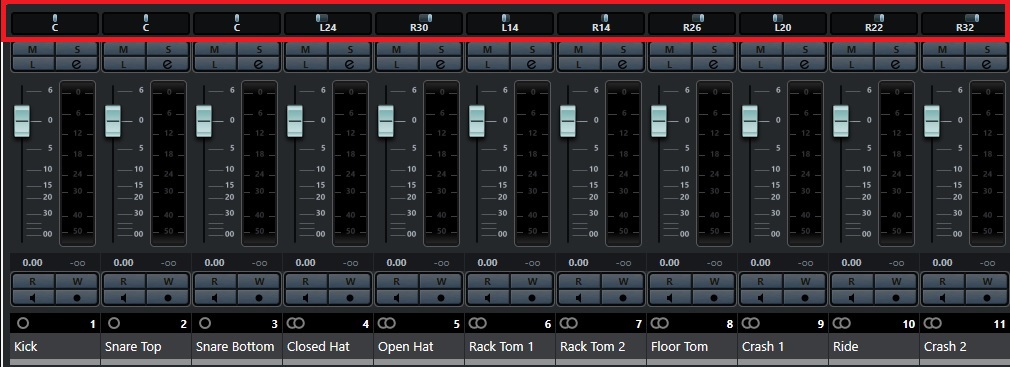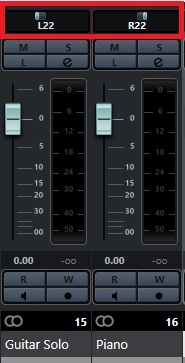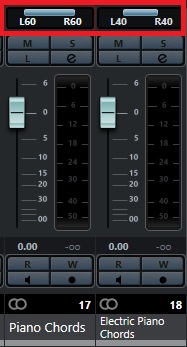I’ve put together an instrument panning cheat sheet that will help you avoid guesswork or getting stuck whenever you’re panning sounds in a mix.
Knowing where to place instruments in the stereo image will help you get wider mixes that sound clearer and make the song exciting to listen to.
Without panning, your mixes will sound too narrow and 2-dimensional (height and depth) but when you pan you’re able to add width and make the song 3-dimension.
Panning also eliminates a lot of clutter, muddiness, and overlapping of instruments. So, it’s very crucial to use it in all your mixes.
Here’s the Best Instrument Panning Cheat Sheet
The goal of this post is to help you pan sounds with confidence without any doubt because this can be a daunting process for beginner engineers.
You can check out my other posts titled audio panning secrets and how to pan instruments to get a better understanding of complementary panning.
These tutorials will also help you understand the importance of stereo image balancing.
In this tutorial, I’m only going to give you the cheat sheet so that’s why you must check the other posts.
Let’s get straight to it.
How to Pan Drums
The best way to nail drum panning is to follow the room and overhead stereo microphones.
Solo one of those channels and listen to where each sound is coming from.
If the hi-hat is on the left, that’s the drummer’s perspective, when it’s dominant on the right channel then that’s the audience perspective.
If there are no overheads then you have the freedom to be creative. Here’s a cheat sheet that will give you a solid starting point.
Kick Drum: the kick is always in the center. This helps the low-end to remain powerful and consistent no matter where the song is played.
Snare Drum: just like the kick, the snare is often in the center to keep it punchy and upfront in the mix.
High Tom: this is sometimes called rack tom 1, it’s normally panned slightly to the left, around 10-15%.
Mid Tom: aka rack tom 2 is on the right channel about 10-15%.
Floor Tom: the low tom is usually on the far right so it’s regularly panned roughly 25%.
Note: if you have 3 rack toms then things will change a bit. For instance, rack tom 1 (left 10%), tom 2 (right 10%), tom 3 (right 15%), floor tom (25%).
Cymbal: the rough guide for cymbals is usually; crash 1 (20% left), ride cymbal (20% right), and crash 3 (right 30%).
Closed Hi-hat: usually panned left around 25-30% left.
Open Hi-hat: this one mostly goes far right, about 30-40%.
Remember, these are estimates because every song is different. You'll need to do what works best for the song that you're currently mixing.

Panning Guitars
Getting the best panning placement for the guitars will depend on how they were recorded and the role they play in the mix.
In most cases, you’ll have to be creative and let the mix determine the position of the guitars in the stereo image.
But if you’re working with layers then there are some guidelines you can follow to guarantee that you get a big sound.
Guitar chords: if the guitar is playing chords and driving the song then it makes more sense to keep them centered for a fuller sound. Panning them on either side will make them disappear when the song is played in mono.
The one thing you can do is to spread them wide using a stereo image tool or other widening techniques to keep them in the center but wide and exciting.
Guitar layers: when it comes to layers check the tutorials I mentioned above. But in a nutshell, you need to keep one layer in the center and the other ones can be panned to the sides to get a full and wide guitar sound.

Guitar solo & melody: these will depend on whether there are other sounds in the mix that can compliment them. If there are sounds that complement them then you can pan them, if not then it’s best to keep them in the center to avoid making your song right/left side heavy.

The rest of the instrumentation will determine the amount for panning any type of guitar.
Find the right spot that is not being dominated by any sound in the mix.
This will help you avoid causing clutter and muddiness.
Grand & Electric Piano
Pianos (both grand and electric) are mostly used for chord progressions as a carpet or background sound for the entire song.
In most instances, you’ll need to keep them in the center to get a fuller sound and then use some stereo widening techniques to make them sound wider.
When the piano is playing a melody or solo you can pan it on either side, as long as there’s a synth, guitar, or any other sound that will fill the other side.
Otherwise, it will just sound weird when panned one side without a complementary sound.
If you’re mixing a song that has got both the grand and electric guitar then pan them separately to see if you like the results or not.
Don’t pan them too much though because these are usually the main instrument in a song.
Also, keep switching between mono and stereo to make sure that they don’t disappear when listening in mono.
Sometimes you might find that the grand piano is not playing throughout the entire song, so don't be afraid to automate the panning for both.
This will add excitement and contrast to the mix.
Auto-pan plugins also work very well with electric pianos to add movement and excitement for the listener.
It’s important to mention that if you choose to keep them both centered and widen them, then you can’t widen them at the same amount.
One should be wider than the other to avoid masking.

Percussion Separation
When it comes to panning percussion it depends on the number of sounds that you have and whether there are drums to accompany them or not.
If the song has both percussion and drum kit then the mix will become very complex and you’ll need to pay close attention to prevent frequency overlapping and stereo image clutter.
There are no rules to this but if you have stereo overhead or room mics that will make your job a lot easier.
If not then you’ll need to get creative.
Here’s a guideline to help you avoid guesswork:
Congas: if you have the full set then you’ll need to spread it for a better sound. The Quinto is the lead so keep it centered (like a snare). The Tres Dos can be panned on the left and the Tumba on the right.
Cajon: the Cajon’s fundamental frequencies are often in the low-end so it’s wise to keep it centered in the stereo field.
Timbales: these are mostly panned on the sides, especially if there are congas to avoid any masking. Watch out for the toms if the mix also has a full drum kit.
Cowbell, Claves, triangle, and Blocks: all of these need to be placed on the sides (with or without other complementary sounds).
Cabasa, Shaker, Shekere, Maracas, Guiro, and Tamb: these are mostly panned to the sides like a hi-hat even when there’s no support instrument to balance the stereo image. But it’s always better to find a complementary sound.
Bongos: the bongos are mostly placed on the sides for a wider stereo feel. In most cases, there are two of them so that’s why it makes sense to pan them.
Strings Section
To get a full sound for the strings section it’s always better to record or design the entire string family instead of just using one string sound.
These include the violin, viola, cello, and the double bass.
The double bass can be left out in some cases but having the other 3 playing together will mostly result in an amazing sound.
Having all three makes it even easier to pan.
The cello will be in the center playing the lower notes, and then pan the viola and violin to the sides to make them sound wider in the mix.
If you have the harp as part of your strings section then you can be creative by panning the cello as well.
Even if you want to be technical and call the guitar, banjo, piano, etc. the same process still applies.

Wrap
By now you should realize that I just keep repeating myself.
So I can’t cover things such as choir, synthesizer, brass section, etc. because I’ll keep saying the same thing over and over again.
The point is really simple to understand, pan everything that is not the main instrument. All the sounds that are in the center need to be wide to create space for the lead vocal, kick, snare, and bass.
There are various ways to make sound wider in the mix, if you want me to cover that then let me know by leaving a comment below.
Basically, before you pan instruments in your mixes, it’s always better to find another sound that you can pan to the opposite side to keep your stereo image balanced.
I trust that you found this post valuable. Feel free to share your thoughts in the comments, I love hearing from all the readers of this blog.
This makes sense I’ll definitely try it.
Awesome. I wish you all the best and feel free to reach out if you get stuck or need help.
Thank you for this wonderful tips on panning. I have one question; you talked about finding other sounds to complement each other when panning, how can someone do that? Do you repeat the same midi information from the other instrument that was planned to the other side or you play totally a different thing?
Hi, it’s much better to play a totally different thing. Playing the same thing twice usually creates unnecessary clutter or thickness. For instance, you can have a hi-hat on the right and have a shaker on the left playing a different pattern. I hope that answers your question.